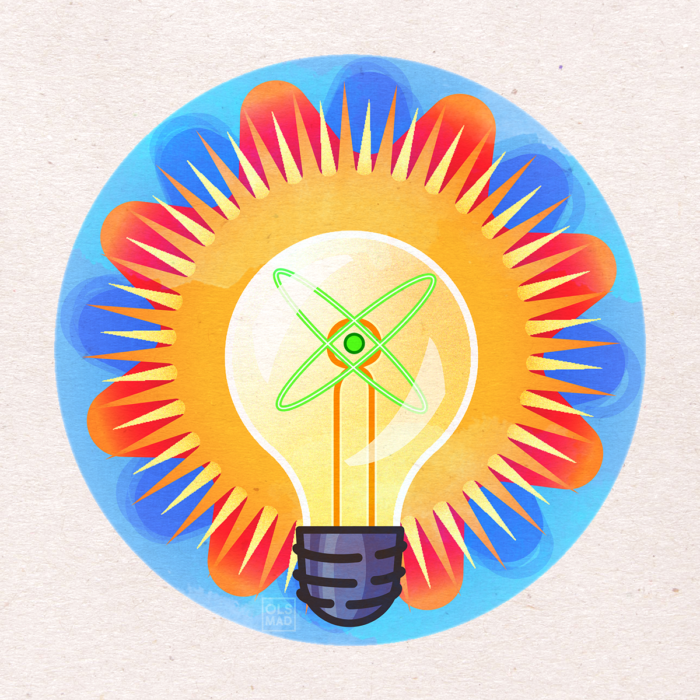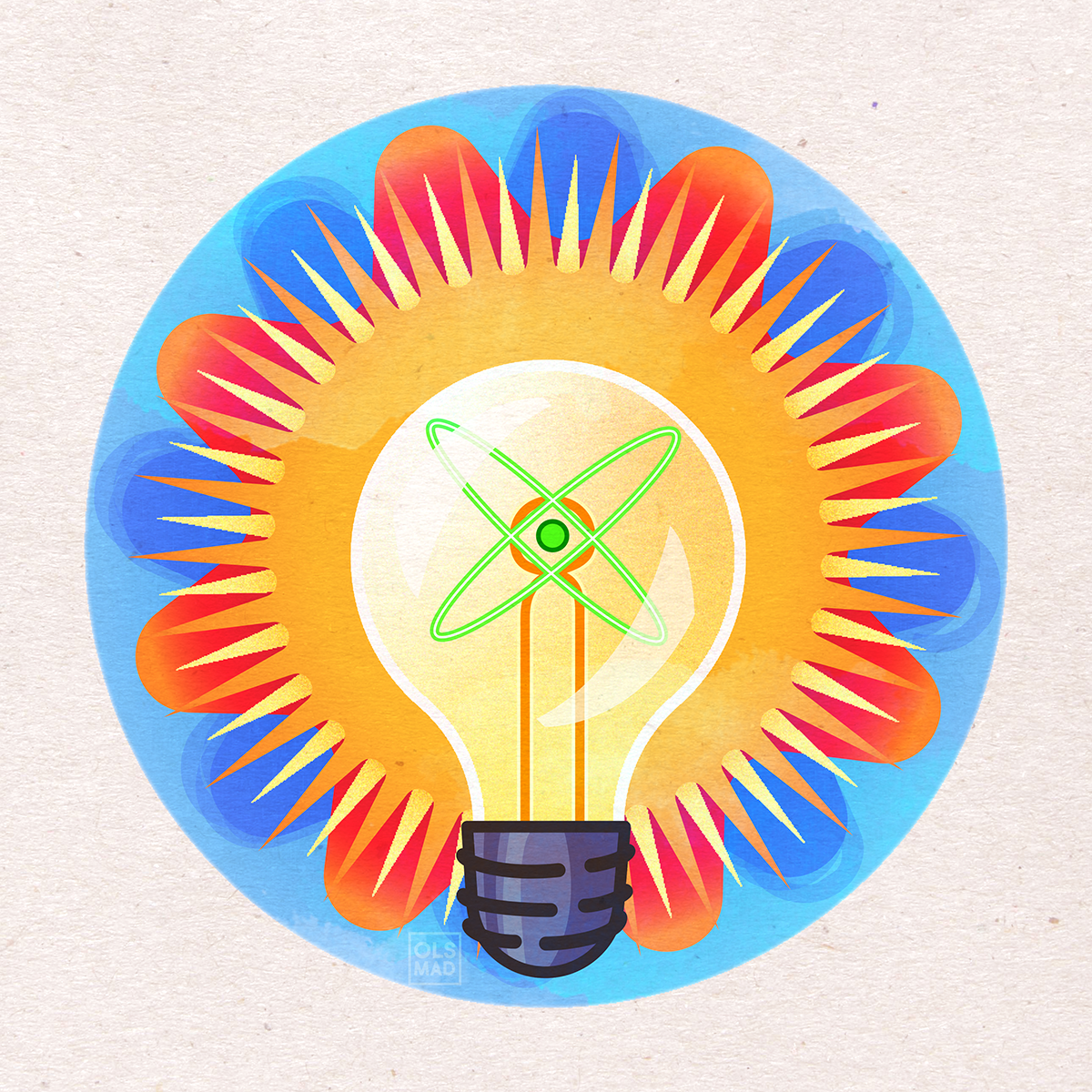
On March 11, 2011, José Reyes thought his company might be toast. That day, an earthquake triggered a meltdown at Japan’s Fukushima Daiichi nuclear power plant. Reyes, a professor emeritus of nuclear science and engineering at Oregon State University, had co-founded a company called NuScale Power in 2007. The firm builds modular nuclear reactors that are smaller and, in theory, safer than the big ones. But the Fukushima disaster left numerous countries — Japan and Germany among them — hightailing it from nuclear energy. Demand for NuScale’s goods, it would stand to reason, could have melted down, as well.
The Fukushima plant failed when the post-quake tsunami swamped the reactor’s generators, thus cutting power to pumps that circulate coolant around the nuclear cores. But in NuScale’s reactors, warm water near the core rises, and cooler water takes its place. The convection system cools the reactor even without power — no pumps required.
So, after Fukushima, “the phone started ringing off the hook,” Reyes said during a 2018 speech. “They said … ‘If your design had been at Fukushima, would this have occurred?’ And we said no.”
Portland-based NuScale is still winding its way through the regulatory process, but work on the firm’s first plant should begin next year in eastern Idaho. Once completed, the 12-module, 720-megawatt facility will supply power to customers of UAMPS, an association of municipal power providers, most in Utah. Reyes’ company is on the vanguard of the transition away from fossil fuels in the West, and it sits atop a debate that has torn environmentalists: What role should nuclear energy play as we de-carbonize the electric grid? The prominence of renewables and fast-improving battery technology have many arguing that nuclear isn’t worth the risk of a meltdown or the waste. But NuScale, as much as any company, is close to fulfilling nuclear energy’s potential.
“In the end, it’s a question of scale,” Reyes said during a recent interview. “One small [uranium] fuel pellet, about the size of the tip of my pinky, has the equivalent energy of a ton of coal.”
Despite the promise of carbon-free, highly reliable power, the expansion of nuclear energy has been hindered by high-profile disasters, concern over nuclear waste, and the exorbitantly high cost of new reactors.
To Utah entrepreneur Glenn Jakins, nuclear’s not worth the bother, especially as companies like his are churning out a technology that’s getting cheaper and more efficient every year: batteries.
“Can you imagine what’s going to happen 10 years from now?” said Jakins, the CEO of Humless, a battery manufacturer based near Provo. “The battery technology is going to be awesome. We’re going to be able to capture the energy the earth is already producing, just with solar and wind.”
Jakins’ firm illustrates a fundamental perk of battery storage: It provides much-needed flexibility for grids reliant on renewable energy. Humless builds home-scale batteries and recently developed an inverter that allows folks to connect rooftop solar panels to numerous battery types. The folks buying Humless batteries and its new inverters, Jakins said, are typically either embracing off-the-grid living, or want reliable backup power should a widespread outage like those that roiled California last fall occur.
“People in the West like to be a little bit more independent,” Jakins said. “We’ve got a lot of homeowners who just want to know that, if the grid goes down, they’ve got power for as long as they need.”
When the power fails, a Humless system instantly turns a home into its own microgrid. And that’s a concept that can scale. While Humless is targeting houses with rooftop solar, utilities are installing battery storage in tandem with enormous solar arrays and wind farms. Entire communities are adopting their own solar-and-storage systems.
A major reason for this shift is that the cost of batteries plummeted 85 percent between 2010 and 2018, according to Bloomberg New Energy Finance. At the same time, the value of battery storage is increasing. Since wind and solar have a habit of generating electricity when nobody needs it, batteries storing that energy become more important as we get more of our electricity from renewables — a trend that’s in full force.
Eight of the 11 contiguous Western states have renewable- or clean-energy targets in place. Cities and counties are also setting ambitious carbon-free goals. The vast majority of these commitments have emerged just in the last three years, portending a huge boost in industrial-scale solar and wind generation.
“With renewable energy … and battery technology hugely dropping in cost, that’s just going to fundamentally change the energy transition,” said Gautam Gowrisankaran, an economist at the University of Arizona. “It’s the tip of the iceberg — we’re going to see a lot more of it.”
All this bullishness around batteries doesn’t bode well for nuclear. A 2018 Massachusetts Institute of Technology report said that deployment of nuclear energy could, in the long run, make the transition to a carbon-free grid far less costly. “Despite this promise, the prospects for the expansion of nuclear energy remain decidedly dim in many parts of the world,” the study said. The “fundamental problem,” the authors wrote, is how expensive it is to build a new nuclear plant.
The construction of two reactors in Georgia (the first to be built in the U.S. in 30 years) is expected to top $25 billion. That’s one reason the MIT report said government support will be necessary for the proliferation of nuclear energy. But some other cost-saving recommendations — offsite production, passive safety features — are being adopted by NuScale.
Building its modular reactors in factories instead of at the jobsite will alone shave billions off construction costs, Reyes said. The UAMPS plant is expected to run $3 billion, far less than conventional reactors, and NuScale expects future versions to be less expensive. The flexibility of offering as many or as few 60-megawatt reactors as a customer wants means buyers can start small, and then ramp up as their energy needs require.
But first, NuScale must build its U.S. plant, which will likely be at or near the Idaho National Laboratory near Idaho Falls. NuScale expects regulatory approval later this year, and full operation in 2027. Reyes speaks often of his desire to lift people out of “energy poverty” across the globe, but starting in the U.S. was important to the firm. For one, the increased regulatory scrutiny will assuage foreign customers, and it insulates NuScale from the forces that have beset Washington-based competitor TerraPower, which had to scrap plans for a demonstration reactor in China amid the trade war.
Reyes recognizes that NuScale’s progression will take place alongside renewable energy and battery deployment. “We need everything,” he said. “I look at the CO2 concentrations, and they just keep going up every year. We keep missing targets. I think in some parts of the country, we’ll be using solar and wind. In other parts, where that’s not as agreeable, we’ll use other technologies, including nuclear power.”
What Reyes expects, then, is an energy grid that looks a lot like the one he’s helping build in the Idaho: one with multiple energy sources, all optimized for safety and consistency — and no carbon.

